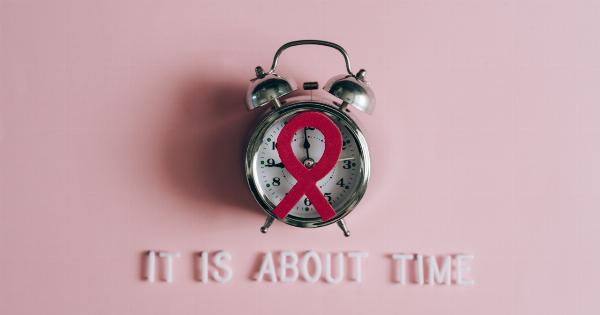HIV and AIDS have been constantly discussed topics since the late 20th century, but despite massive public information campaigns, there are still misunderstandings about the diseases.
Here, we’ll break down common myths about HIV and AIDS to help you understand these conditions better.
Myth 1: HIV and AIDS are the same thing.
HIV stands for Human Immunodeficiency Virus and it is a virus that attacks the body’s immune system, leaving it vulnerable to other infections.
AIDS, on the other hand, stands for Acquired Immunodeficiency Syndrome which is the last stage of an HIV infection where the immune system is severely damaged. So, you can be HIV positive but not have AIDS.
Myth 2: HIV and AIDS can be transmitted through casual contact.
This is false. HIV can only be transmitted through contact with bodily fluids of an infected person such as blood, semen, vaginal fluids, rectal fluids, breast milk or pre-cum.
Therefore, simple actions such as holding hands, hugging or casual kissing cannot transmit the virus from one person to another.
Myth 3: HIV is a gay man’s disease.
HIV does not affect anyone based on their sexual orientation or lifestyle choices. HIV is a virus that affects anyone who is exposed to it. However, certain groups of people are at higher risk of contracting the virus.
These include men who have sex with men, sex workers, intravenous drug users, and people who have unprotected sex with HIV positive partners.
Myth 4: HIV can be cured.
As of now, there is no cure for HIV. But with early diagnosis and treatment, HIV positive individuals can live long and healthy lives.
Treatment involves taking antiretroviral therapy (ART) which can suppress the virus, protect the immune system and minimize the risk of transmission to others. While HIV cannot be cured, it can be managed successfully.
Myth 5: HIV can be transmitted through sharing eating utensils with someone who is HIV positive.
This is a myth. HIV does not spread through saliva, so sharing utensils or cups with an HIV positive individual is safe. However, sharing needles, syringes, or other injection equipment can lead to HIV transmission.
Myth 6: HIV testing is unnecessary if you’re in a monogamous relationship.
It is essential to get tested for HIV regardless of your relationship status. HIV can be present in the body for years without showing any symptoms, and it can only be detected through testing.
Additionally, being in a monogamous relationship does not guarantee protection against HIV as it can be transmitted through unprotected sex if one partner is already infected.
Myth 7: HIV positive women can’t have healthy babies.
With proper medical care, HIV positive women can and do have healthy pregnancies and healthy babies.
Women with HIV can reduce the risk of transmitting the virus to their baby to less than 1% by taking antiretroviral drugs during pregnancy, labor and delivery and by avoiding breastfeeding. With the appropriate medical care, HIV positive women can have healthy babies without transmitting the virus to their child.
Myth 8: HIV/AIDS is only a problem in developing countries.
This is not true. While HIV/AIDS is a significant issue in developing countries, it is a global problem affecting people of all ages, races, and socioeconomic backgrounds.
In the United States alone, about 1.2 million people are living with HIV, and nearly 40,000 new HIV diagnoses are reported each year. It is essential to remain informed and proactive in managing HIV/AIDS since it affects millions of people worldwide.
Myth 9: HIV is a death sentence.
With early detection, medical care, and effective treatment, HIV is a manageable chronic illness. Advances in medical care have allowed people living with HIV to live long and healthy lives, even with advanced HIV.
While HIV used to be considered a death sentence, it is not true anymore.
Myth 10: You can’t do anything to help someone who is HIV positive.
You can help people who are HIV positive by creating a supportive and understanding environment. Educating yourself and others about HIV and how it spreads helps to reduce stigma around the disease.
Also, volunteering with HIV/AIDS organizations, fundraising for research, and advocating for policies that promote health care, prevention and treatment are all ways to help support efforts in managing HIV and AIDS.





























